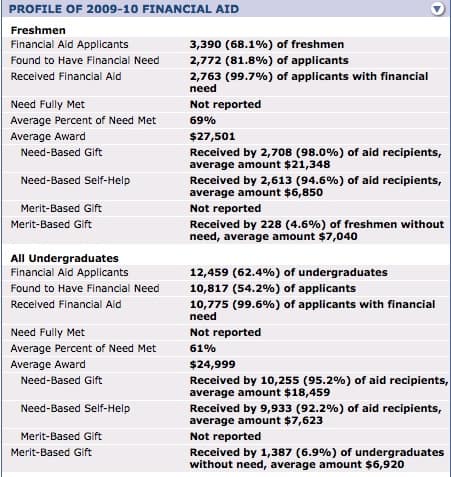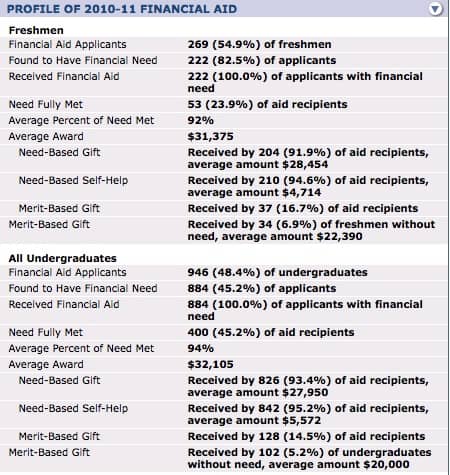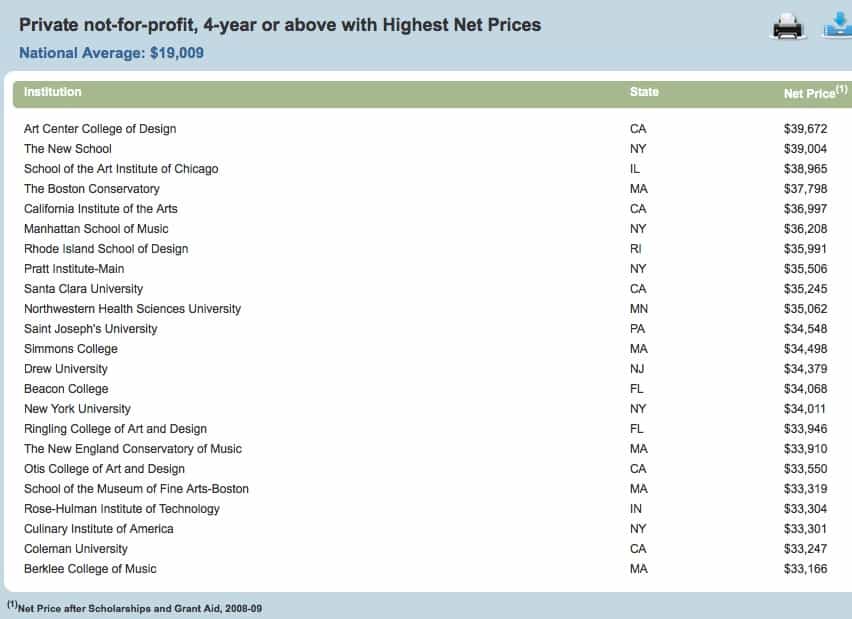When families look at financial aid packages they often assume that a school’s financial aid support will remain the same for four years. That, however, is a dangerous assumption to make.
The financial support that some colleges and universities give students will shrink after their freshmen year.
Bait and Switch?
Why would this happen? I can’t speak for schools that do this, but you could certainly make the case that colleges are taking advantage of this reality: students don’t have a lot of leverage. A junior, for instance, who sees a drop in his aid package probably isn’t going to leave for another school. Families are going to find the extra money or borrow even more.
Financial Aid for Upper Classmen
When you’re researching schools, you want to check not only the average level of financial support for freshmen, but for other undergrads as well. I got that excellent advice from Ricki Bennett, a former administrator at the University of California and a vice president at COLLEGEdata, whom I talked to last week at a large college conference in New Orleans.
At this point you are probably wondering how you can determine if a university will become stingy (or stingier) after a student’s freshman year. You can use COLLEGEdata, one of my favorite college research sites, to find out.
To illustrate what you can find, I first headed to the US Department of Education’s College Affordability and Transparency Center. I pulled the names of a couple of schools from the federal list of schools with the most expensive net prices after average grants/scholarships are subtracted. Here is the list of the private schools that are the worst offenders:
I picked two schools from this list because I figured these stingy institutions would be more likely to reduce their aid to return students. I selected Santa Clara University because it has the highest net price among private schools that aren’t in a niche like art and music. I also chose NYU because it is one of the most popular schools in America despite its financial aid practices. Incidentally, at the college conference I was at last week, I asked a rep from NYU why it had such poor financial aid and the rep replied that the school was “working on it.”
Santa Clara University
Here are the financial aid stats for Santa Clara University:

There is a lot to look at here, but what I want you to focus on is the percentage of financial need met for freshmen (74%) and the average percentage of need met of all undergraduates (67%). That’s a sizable drop in help and it’s reflected in the average need-based gift of Santa Clara students. The average need-based gift aid for freshmen was $22,031 versus $18,666 for all undergrads. That’s a difference of $3,365, which is considerable and doesn’t take into consideration that the price keeps increasing every year.
New York University

As you can see, the average percentage of financial need met for NYU freshmen – an underwhelming 69% – drops even further for other NYU students (61%). The average need-based grant drops from $27,501 to $24,999.
Babson College
Just to show you that not all schools treat older students differently when it comes to financial aid, I’m sharing a school that I picked at random – Babson College in Massachusetts. The average percentage of need at Babson, which is a well-known business school, actually increased for upperclassmen. The average percentage of need for all undergrads (94%) was higher than for freshmen (92%). It’s nice to see aid going up because it would suggest that a school is helping its upperclassmen when their families encounter financial difficulties.
 Bottom Line:
Bottom Line:
When evaluating a school check the generosity (or lack of it) for all students, not just freshman. Here is another post that I’d suggest you read that focuses on another helpful tool from COLLEGEdata:
Anatomy of a Stingy College and a Generous One
Lynn O’Shaughnessy is the author of The College Solution and she also writes college blogs for CBSMoneyWatch and US News & World Report.


Interesting (though disturbing) post. So if your child is offered financial aid from a college, what can you do, if anything, to make sure you don’t get the rug pulled out from under you after a first somewhat generous year? Looking at the stats is instructive, but I’m sure the financial aid offices will say that they make decisions on a year-by-year, case-by-case basis. This is scary to me.
Hi M,
I do think it’s wise to ask financial aid offices even though they might not be entirely honest. I’d also look at the freshmen retention rate of schools. You can find that by looking at a school’s profile on CollegeResults.org. It’s not always going to be helpful, but sometimes it will — particularly if the school doesn’t attract lots of rich kids who can pay regardless. In the case of NYU and Santa Clara, 93% of freshmen return, which is high. That doesn’t reflect their poor financial aid practices. Wish I could be more helpful.
Lynn O’Shaughnessy
This post is ridiculous. Federal financial aid is applied for on a yearly basis as it CLEARLY states on the application. The fed has a large say in how much aid a student receives and it is need based as well as contingent on the number of contact hours. Anyone dumb enough to assume financial aid is a lock for four years obviously wasn’t paying attention. The people applying to NYU most likely come from high income families = poor financial aid rating.
Thanks for your comment Alyssa. I hate to tell you, but you’re observation is wrong. The stats that I share are the percentage of financial need met by NYU for students who have documented financial need. This has nothing to do with rich students who receive no financial aid and don’t bother to apply for aid. These stats only focus on students who apply for aid and have real financial need.
The federal financial aid is a miniscule amount compared to what students at NYU need. The top federal Pell Grant is just $5,500, which is nothing for a super expensive school like NYU.
NYU just isn’t a generous school and is even less so for older students. It’s a fact.
Lynn O’Shaughnessy